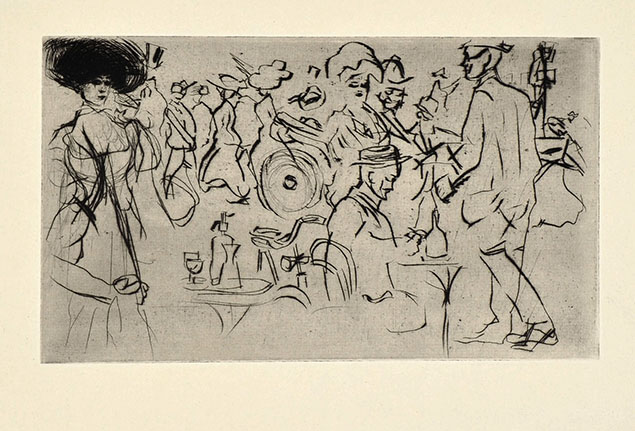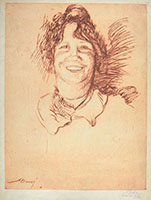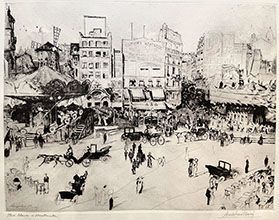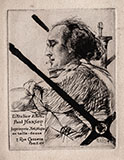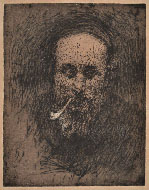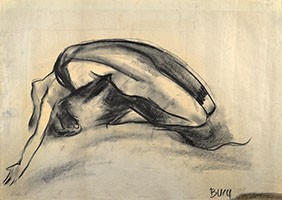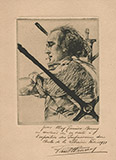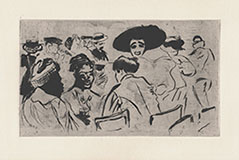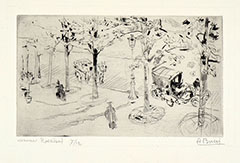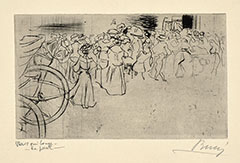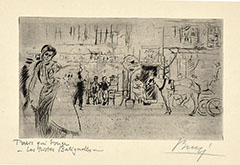(Fossombrone 1887 - Monza 1955)
L'APERITIF, 1909
Drypoint, from the series Paris qui Bouge; fine impression on laid paper, with full margins.
On the verso Anselmo Bucci's mark: ANSELMO BUCCI / PITTORE / MONZA
To the platemark 124 x 212 mm, the full sheet 252 x 325.
An impression of this print, is preserved in Milan at the Civica Raccolta delle Stampe Achille Bertarelli (Mod. p. 7-11)
A painter and a printmaker, Bucci attended the Brera Academy in Milan in 1905. At the Brera he established a close friendship with Leonardo Dudreville, with whom he travelled to Paris in 1906, where he was to live until 1914. Bucci quickly made friends with other expatriates including Severini, Modigliani and Viani, and also became acquainted with Rodin, Picasso, Apollinaire, Dufy, Utrillo and Suzanne Valadon. In Paris he was taught pure etching by Manuel Robbe, an he quickly attracted attention for a series of 25 small drypoints, Paris qui bouge, of 1908, and a further set of 50 issued the following year under the same title. The subjects were Parisian street life captured from unusual viewpoints, familiar from Impressionist painting. From 1915 Bucci served alongside many of the Futurists in the Cyclists' Batallion of the Italian army. Bucci's experiences at the front led to Croquis du Front Italien, published in Paris by D'Alignan, and included in the huge exhibition La mostra di Guerra di Anselmo Bucci, at the Palazzo San Giorgio in Genoa in March 1917. These unsentimental and unheroic drypoints are the finest prints produced by an Italian artist in the First World War. In the years after the war Bucci divided his time between Milan and Paris, before settling in Milan in 1922. The following year he suggested the name Novecento for a group of seven artists associated with the Galleria Pesaro. Their aim was to return to figurative art in contrast with the growing extremism of the Avant-gardists. The writer Margherita Sarfatti, art critic of Mussolini's newspaper, Popolo d'Italia, was their spokesman. He took part in the group’s first show in 1926 but not the second. In 1938 Bucci received the commission for painting a monumental fresco for Milan's Palazzo di Giustizia. During the second European war he adapted to being a war artist recording the events of the war as he had done previously. In 1945, following the bombing of his house in Milan, he returned to Monza to his father’s home. Bucci took a strong stand against the promotion of abstract art in post war Italy, in 1952 refusing an invitation to exhibit at the Venice Biennale, where his work including his prints had been shown regularly from 1920. He was very active as a printmaker to the end of his career.
